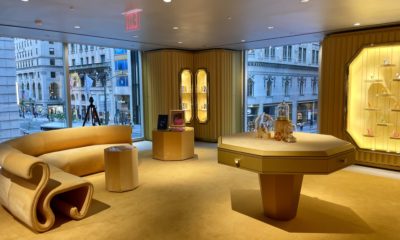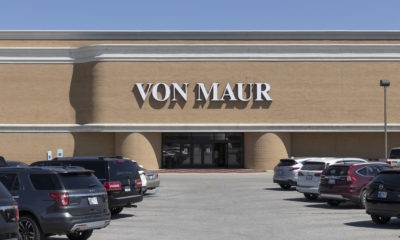Linda Cahan has been in visual merchandising and display since 1971, working with both traditional department stores and small specialty shops, hard and soft lines as well as appliances and computers.
She wrote “A Practical Guide to Visual Merchandising” in 1984 and taught at Parsons School of Design in New York for 12 years.
At VM+SD's International Retail Design Conference, Cahan will conduct a one-day Retail Design Workshop, showing examples of effective visual merchandising and leading a team exercise on store layout and design. Here are some of her thoughts:
Retail's dollars and senses
There are few absolutes in retail design. Ugly stores can be profitable, and fabulously designed stores may fail terribly.
Advertisement
A pretty store can be nothing more than a tricked-out box with no soul. Most designers can come up with amazing designs that look great on paper – and equally fascinating in their build-out. But the true test is: How does a store function once the merchandise is in place? What is the flow or the energy of the store? Where are the hot areas and the dead zones?
We have six senses to excite: sight, sound, taste, touch, smell and intuition. Many years ago, an educational study discovered that when people see something, they retain 23 percent of the information. If they see and hear the same thing, retention climbs to 43 percent. Add touch, and retention soars to 86 percent. Imagine adding taste and smell and you have fully engaged the person.
The sense of touch may be enhanced with the use of wood, rippled glass, padded walls, velvet cushions, soft floors or any material that feels good to the touch. Interactive games and videos are excellent for younger age groups and connect with the senses of sound, touch and sight.
A sense of smell can be engaged by aromatherapy. The most popular (and least offensive) odor in the U.S. is apple cinnamon. Color, texture, displays, lighting, focal points and a dynamic aisle floor plan – all those can excite visual senses.
Add to that great merchandise at appropriate prices and you have a winner. Or do you? The elusive sixth sense – that of intuition or “feel” – is what puts some retailers over the top. No designer can manufacture a good feeling in a store. Only the people who work there can create the good “vibes” that are necessary to have a successful business.
How the store owner and management treat the sales staff is one secret to the magic of good vibes. Unhappy help will kill the energy of a store quicker than a poor design or overpriced merchandise.
Advertisement
Designers are also discovering that people respond well to a mix of elements. Natural elements correspond to the elements in our bodies. Many stores traditionally used far too many chrome racks, granite floors, nylon rugs and sheetrock walls – cold and sterile. Today, retail designers are looking at natural rocks, slate, wood, waterfalls, skylights, color-correct lights and interesting metals. They are designing fixtures that incorporate wood and metal. The wood softens the experience and makes it more human-friendly. The metal adds strength and sheen.
A “decompression zone” – anywhere from 6 to 15 feet, depending on the size of the store – allows a customer to acclimate to the store, look around and decide which way to walk. When a customer walks into a store and is confronted immediately by a sales desk or person, she has no chance to ease into the space. Relaxed customers enjoy shopping far more than tense ones.
Retail designers are now using more texture changes to indicate new areas and to delineate aisle pathways. Sisal, low carpeting, tiles, wood and slate may all be used throughout one store. Very often, these elements will be in a monochromatic color scheme, an elegant look that remains non-distracting to the customer.
Retail design today is challenged by fear – the fear of looking too much like the competition or, worse yet, looking dull or uninteresting. We fear that retail decision-makers won't allow our creativity.
What do retailers fear? Their greatest anxiety is that the new store design won't encourage sales and that they will go out of business. Very simple, but very important!
So designers are rethinking the entire design process to help bring retail into the new economy. Change is creative growth – and that's exciting for any designer.
Advertisement


 Headlines2 weeks ago
Headlines2 weeks ago
 Headlines2 weeks ago
Headlines2 weeks ago
 Eric Feigenbaum6 days ago
Eric Feigenbaum6 days ago
 Headlines1 week ago
Headlines1 week ago
 Headlines5 days ago
Headlines5 days ago
 Headlines2 weeks ago
Headlines2 weeks ago
 Headlines7 days ago
Headlines7 days ago














